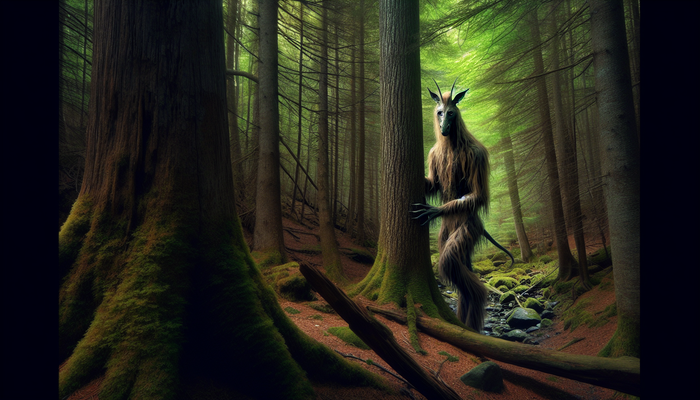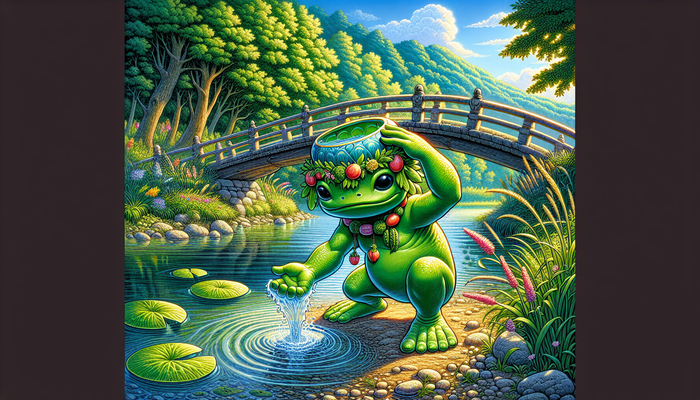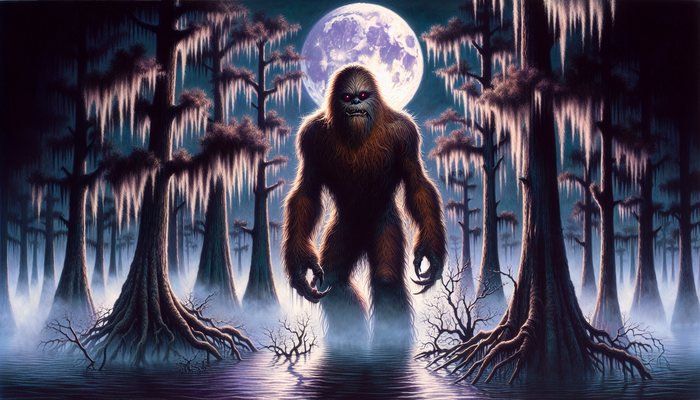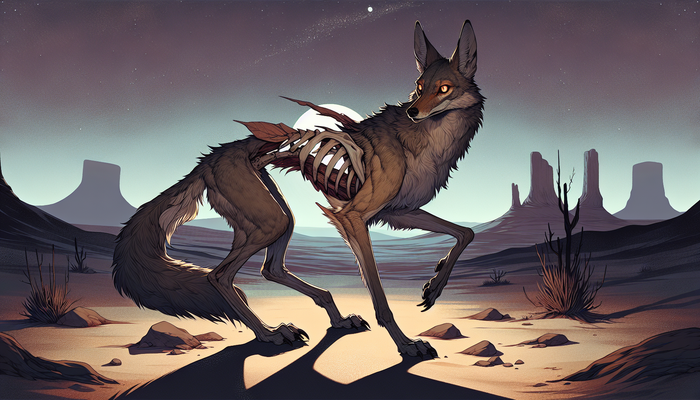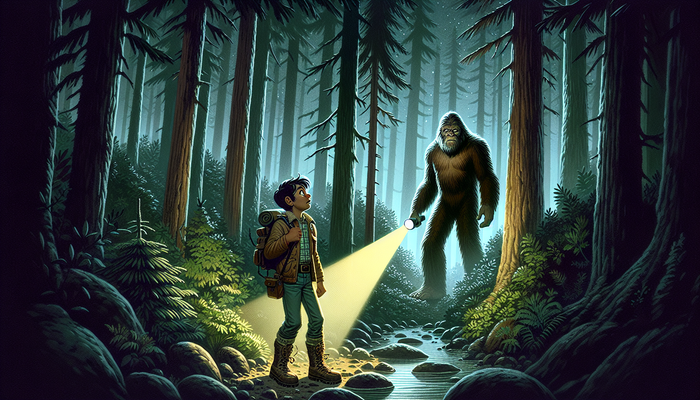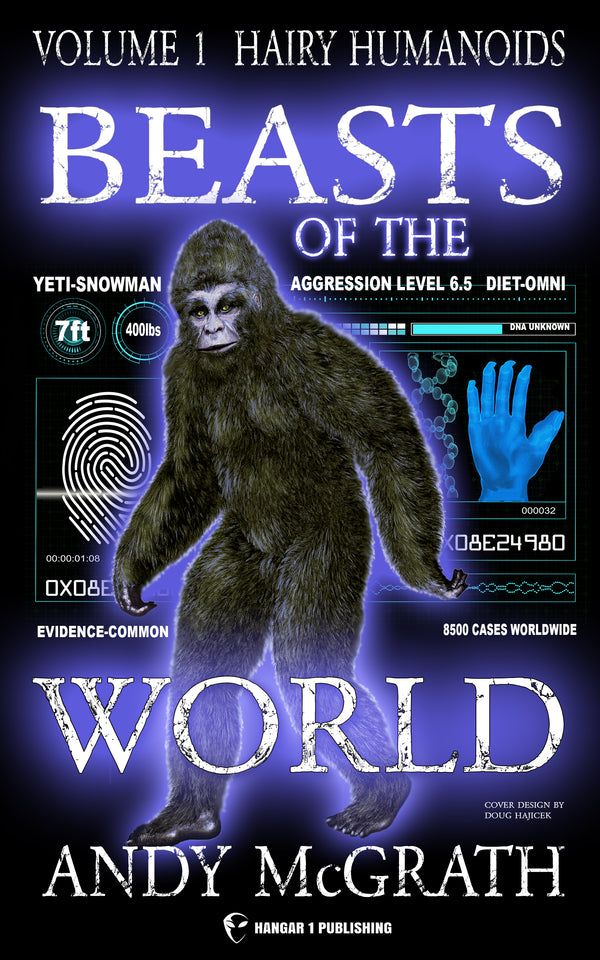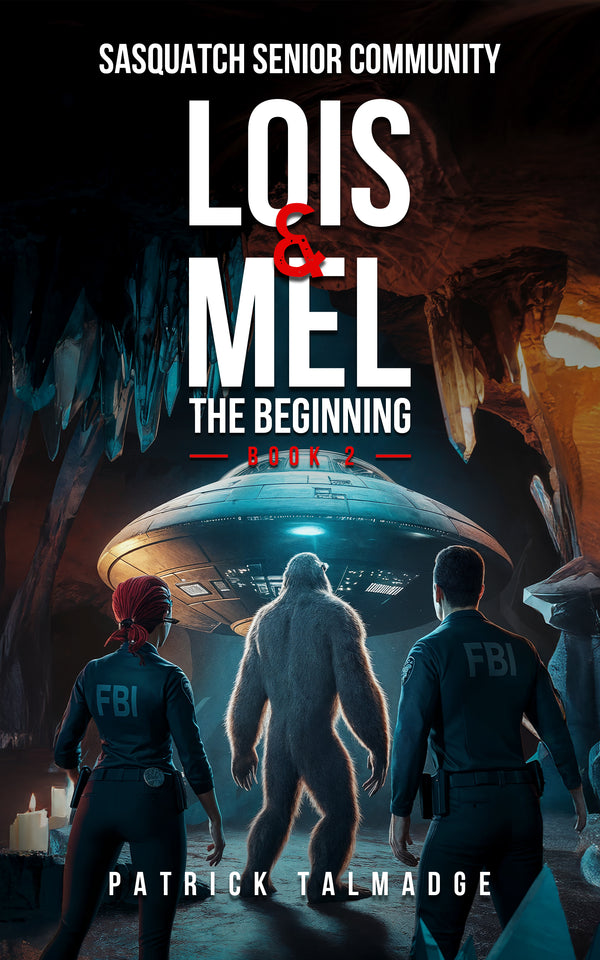What is a Goat Sucker? Unraveling the Chupacabra and Nightjars
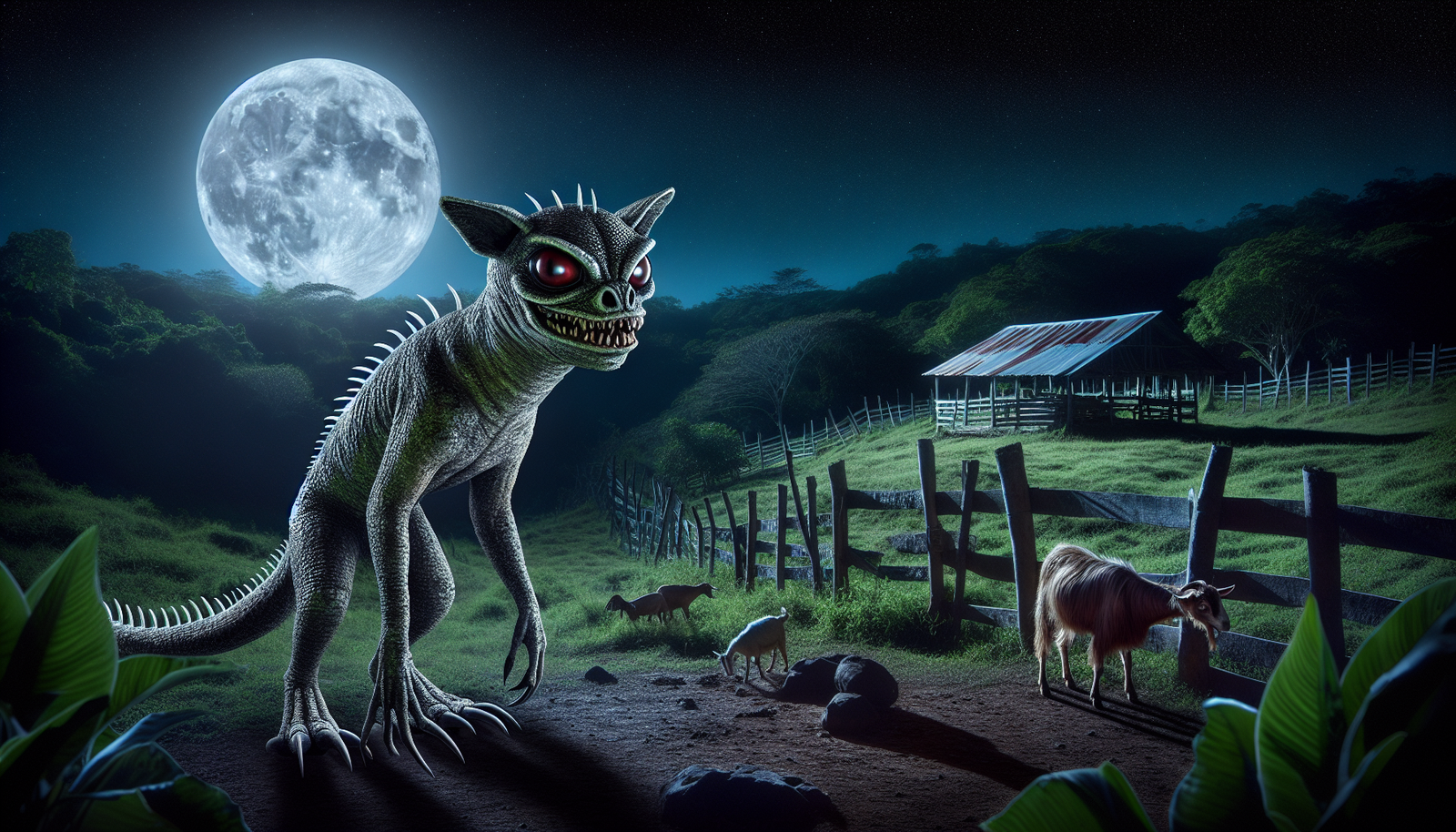
By Anthony Romano, Cryptozoologist
The Chupacabra: A Modern Myth Born in Puerto Rico
Picture this: It's 1995 in Puerto Rico. The air is thick with humidity and fear. Farmers are waking up to a grisly sight - their livestock, particularly goats, found dead and drained of blood. Three puncture wounds mark each carcass, a chilling signature of an unknown predator. This wasn't just one isolated incident. Reports flooded in from across the island, sparking a panic that would soon spread far beyond Puerto Rico's shores.
Enter the Chupacabra, a name that would send shivers down spines for years to come. But where did this creature come from? The term "Chupacabra" itself is a linguistic clue, combining the Spanish words "chupar" (to suck) and "cabra" (goat). It's a name that paints a vivid and terrifying picture, one that captured the public imagination almost instantly.
The birth of the Chupacabra legend wasn't without precedent. Twenty years earlier, in 1975, the small town of Moca, Puerto Rico, had been gripped by tales of the "Vampiro de Moca" (the Vampire of Moca). This earlier incident laid the groundwork for the Chupacabra phenomenon, priming the cultural landscape for a new kind of monster.
Descriptions and Sightings
But what exactly did people claim to see? The descriptions were as varied as they were fantastical. Some spoke of a reptilian creature, roughly the size of a small bear, with leathery or scaly skin. Others described it as more canine in appearance, but with alien-like features. Almost all accounts mentioned piercing, glowing eyes - red or sometimes black - that seemed to hypnotize their prey.
One of the most famous early sightings came from Madelyne Tolentino, a Puerto Rican eyewitness whose detailed description would shape the Chupacabra's image for years to come. She described a bipedal creature with large, oval eyes, standing about 4 feet tall. This account, vivid and specific, helped solidify the Chupacabra in the public consciousness.
As news of the creature spread, so did the sightings. Reports began popping up across Latin America, each adding new details to the Chupacabra's ever-evolving description. In Mexico, it was often portrayed as more dog-like, while in Chile, some claimed it had bat-like wings. The Chupacabra was becoming a shape-shifter, adapting to the fears and folklore of each region it "visited."
Alleged Behavior and Impact
But it wasn't just the appearance of the Chupacabra that fascinated people - it was its alleged behavior. The creature was said to attack at night, using its sharp fangs to puncture the skin of livestock and drain them of blood. Some even claimed it had a tube-like tongue that acted as a syringe, sucking out blood with terrifying efficiency.
The impact of these stories was profound. Farmers began arming themselves, setting up night watches to protect their animals. Local authorities were inundated with reports and demands for action. The media, both in Puerto Rico and internationally, latched onto the story, fueling the fire of public fascination.
Scientific Explanations
As the legend grew, so did attempts to explain it. Some turned to science fiction, suggesting the Chupacabra was an alien creature or the result of secret government experiments. Others looked to more earthly explanations, proposing it might be an unknown species of vampire bat or a hybrid animal created through illegal breeding programs.
The scientific community, however, was skeptical from the start. As investigations into the alleged attacks increased, a pattern began to emerge. Many of the "victims" showed signs of common predation, not the bloodless corpses the legend described. Forensic experts examining the bodies found no evidence of the systematic blood-draining the Chupacabra was famous for.
So, if not a mythical blood-sucking creature, what was behind these attacks? The answer, it turns out, was far less sensational but no less intriguing. Many of the Chupacabra sightings, particularly in the United States, were likely misidentified animals suffering from a severe case of mange.
Sarcoptic mange, caused by microscopic mites, can have a devastating effect on animals like coyotes and foxes. It causes hair loss, thickened skin, and can alter their appearance dramatically. An animal with advanced mange might look alien and frightening, especially in low light or to someone primed by stories of monsters.
This explanation gained significant traction in 2010 when University of Michigan biologist Barry O'Connor conducted an in-depth study of alleged Chupacabra specimens. His conclusion? They were coyotes with an extreme case of mange. The hairless, leathery skin, the pronounced spinal ridge, even the seemingly oversized canine teeth (a result of receding gums) - all hallmarks of severe mange that eerily matched descriptions of the Chupacabra.
The Persistence of the Legend
But if science had "solved" the mystery, why does the legend persist? The answer lies in the power of storytelling and the human need to explain the unexplainable. The Chupacabra became more than just a creature - it became a symbol of the unknown, a modern-day boogeyman that allowed people to give shape to their fears.
The legend also tapped into deeper cultural anxieties. In Puerto Rico, some saw the Chupacabra as a manifestation of fears about American imperialism and secret military experiments. In other parts of Latin America, it became tied to concerns about economic exploitation and environmental degradation.
Moreover, the Chupacabra story spread at a time when the internet was beginning to connect the world in unprecedented ways. Online forums and early social media platforms allowed the legend to travel faster and farther than ever before, mutating and adapting as it went.
Today, the Chupacabra has become a staple of popular culture. It's featured in movies, TV shows, and video games. You can buy Chupacabra plush toys and t-shirts. It's become a tourist attraction in parts of Latin America, with towns capitalizing on their connection to the legend.
The Nightjar: Nature's True Goat Sucker
Long before the Chupacabra entered our collective imagination, another creature bore the name "goat sucker." This time, we're not dealing with a mythical beast, but with a family of birds known as nightjars, or Caprimulgidae.
The connection between these birds and goat-sucking goes back millennia. In fact, we can trace it all the way back to Aristotle, who wrote about these birds in his "History of Animals" around 350 BCE. He described them as creatures that would fly into shepherds' enclosures at night and suckle milk from goats, leaving the animals blind and dry.
Of course, like the blood-draining Chupacabra, this behavior is pure myth. Nightjars are insectivores, with no interest in goat's milk. But the name stuck, and even made its way into their scientific classification. The genus name Caprimulgus literally means "goat-milker" in Latin.
Characteristics of Nightjars
So, if they're not actually sucking milk from goats, what are these birds really like? Nightjars are a family of birds found all over the world, with about 100 known species. They're medium-sized birds, often compared to robins or thrushes in size, but with some unique adaptations that set them apart.
The most striking feature of nightjars is their enormous mouths. When closed, their beaks look tiny, but they can open incredibly wide, creating a massive gape that's perfect for catching insects on the wing. This mouth is often fringed with bristles, which some scientists believe help to funnel insects into the bird's mouth as it flies.
Their plumage is another remarkable feature. Nightjars are masters of camouflage, with intricate patterns of browns, grays, and blacks that allow them to blend seamlessly into their surroundings. This camouflage is so effective that a nightjar sitting still on a tree branch or on the ground can be nearly impossible to spot, even when you're looking right at it.
Behavior and Ecological Role
Nightjars are primarily nocturnal or crepuscular, meaning they're most active at night or during twilight hours. This nighttime lifestyle is likely what led to their association with mystical goat-sucking. After all, if you're a shepherd and you see strange birds flitting around your goats at night, it's not hard to imagine how superstitions might arise.
But far from being supernatural milk-thieves, nightjars play a crucial role in their ecosystems. They're voracious insect eaters, capable of consuming large quantities of moths, beetles, and other flying insects each night. This makes them important for controlling insect populations, including some agricultural pests.
Their hunting strategy is fascinating to watch. Nightjars will often perch on a branch or fence post, scanning the sky for insects. When they spot prey, they launch into the air with a graceful, silent flight, snatching the insect out of the air with their wide mouths. Some species will even catch insects kicked up by larger animals, which might explain their tendency to hang around livestock.
Notable Nightjar Species
One of the most well-known nightjars in North America is the Whip-poor-will, named for its distinctive call. These birds have a haunting, repetitive song that's been the backdrop for countless summer nights and no small amount of folklore. In fact, the Whip-poor-will's call is so persistent that one ornithologist once counted a single bird making its call 1,088 times without stopping!
Another remarkable member of this family is the Common Poorwill, found in western North America. This bird has the unique distinction of being the only known bird species capable of entering a state of torpor similar to hibernation. During cold periods when insects are scarce, the Poorwill can lower its body temperature and slow its metabolism, allowing it to survive for weeks without food.
Conservation Challenges
Despite their fascinating adaptations and important ecological role, many nightjar species are facing challenges. Habitat loss is a significant threat, as these birds often require specific types of open woodland or scrubland for nesting and foraging. Light pollution is another issue, as it can disrupt their nocturnal hunting patterns and affect the insects they rely on for food.
Climate change poses yet another threat, potentially altering the timing of insect emergence and the birds' breeding cycles. Conservation efforts are crucial to ensure the survival of these unique birds, but their cryptic nature and nocturnal habits make them challenging to study and protect.
The Intersection of Myth and Reality
The dual nature of the term "goat sucker" - referring to both the mythical Chupacabra and the very real nightjars - offers a fascinating lens through which to examine the interplay between folklore and the natural world.
On one hand, we have the Chupacabra, a creature born from fear, mystery, and the human tendency to seek explanations for the unexplained. It's a modern myth that spread rapidly in the age of mass media and the internet, evolving and adapting as it traveled. The Chupacabra represents our continued fascination with the unknown, our ability to create new folklore even in an age of scientific enlightenment.
On the other hand, we have the nightjars, real birds whose unusual characteristics and nocturnal habits led to centuries of misunderstanding and superstition. Their story is one of how observation of the natural world, filtered through human imagination and cultural beliefs, can create enduring myths.
Both "goat suckers" reflect different aspects of human nature. The Chupacabra embodies our fear of the unknown and our need to give shape to that fear. It's a canvas onto which we project our anxieties, whether they're about mysterious predators, government conspiracies, or the rapid changes of the modern world.
Nightjars, in contrast, represent the wonder and mystery of the natural world that exists right under our noses. Their story is a reminder of how much there is to discover about the creatures we share our planet with, and how our misunderstandings can shape our perceptions of nature.
The Power of Storytelling
The persistence of the "goat sucker" myth in both its forms also speaks to the power of storytelling. Whether it's ancient shepherds spinning tales about birds that steal milk or modern internet users sharing Chupacabra sightings, these stories connect us to each other and to the world around us. They're a testament to human creativity and our endless fascination with the mysterious.
But there's also a cautionary tale here. The spread of the Chupacabra myth shows how quickly misinformation can take hold and how resistant it can be to scientific explanation. In an age of social media and instant global communication, it's more important than ever to approach extraordinary claims with critical thinking and skepticism.
At the same time, the story of the nightjars reminds us not to dismiss folklore entirely. While the goat-sucking myth isn't true, it led to centuries of fascination with these birds, ultimately contributing to our scientific understanding of them. Sometimes, exploring the gap between myth and reality can lead us to new discoveries and a deeper appreciation for the world around us.
Conclusion
As we continue to explore our world, both through scientific inquiry and cultural storytelling, the tale of the "goat suckers" serves as a reminder of the complex relationship between humans and nature. It challenges us to remain curious, to question our assumptions, and to find wonder in both the mythical and the real.
Whether it's a legendary blood-sucker or a camouflaged insectivore, the "goat sucker" continues to capture our imagination, reminding us that there's always more to discover in the shadows of our world. So the next time you hear a strange noise in the night, take a moment to wonder - is it the call of a nightjar, the shadow of a Chupacabra, or simply the echo of our own endless fascination with the unknown?
From Bigfoot to UFOs: Hangar 1 Publishing Has You Covered!
Explore Untold Stories: Venture into the world of UFOs, cryptids, Bigfoot, and beyond. Every story is a journey into the extraordinary.
Immersive Book Technology: Experience real videos, sights, and sounds within our books. Its not just reading; its an adventure.



